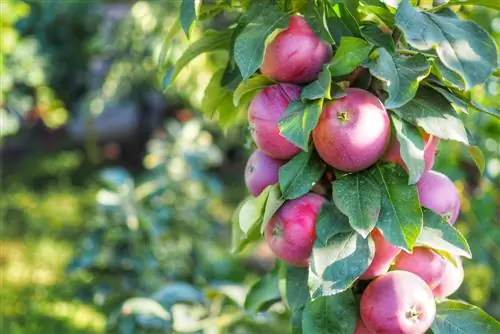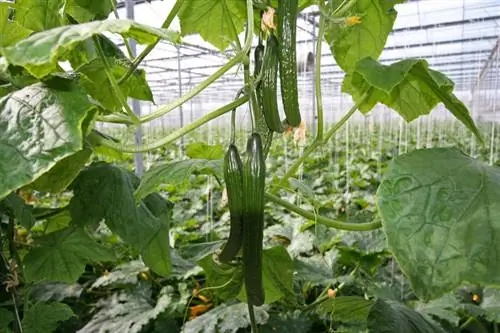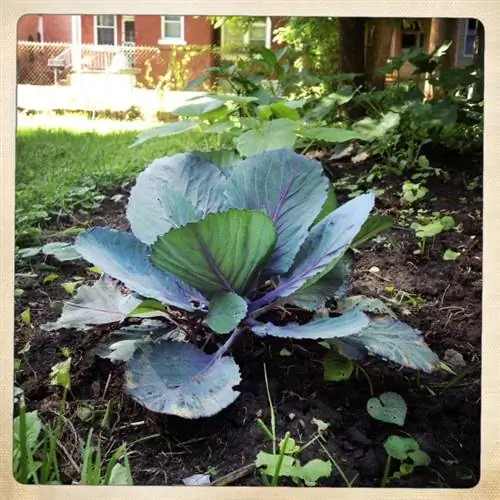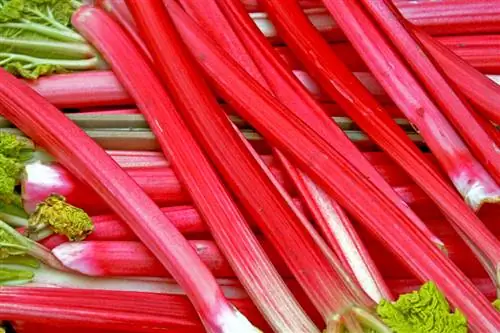- Author admin [email protected].
- Public 2023-12-16 16:46.
- Last modified 2025-01-23 11:21.
Unlike other varieties, columnar apple trees do not have a thick trunk or a sprawling crown. Instead, they remain narrow in growth and often only reach a height of between two and three meters. The fruits usually grow directly on the trunk - unless it is not a "real" columnar apple - and taste just as juicy and sweet as any other apple. Proper care of the otherwise uncomplicated trees ensures a delicious harvest.
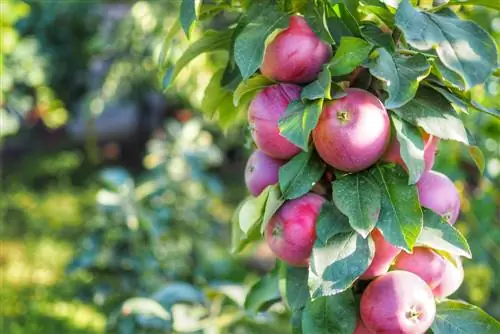
How do you properly care for a columnar apple tree?
Caring for a columnar apple tree includes regular watering without waterlogging, fertilizing with compost (€10.00 on Amazon) and liquid fertilizer, as well as pruning long, dead or diseased shoots. Columnar apples are hardy, but container trees should be protected from the cold.
Do you have to water the columnar apple regularly?
Pillar apple trees cannot tolerate waterlogging, which is why good drainage and a loose substrate are of great importance, both in the pot and in planted specimens. However, the planting soil must not dry out, the tree needs a lot of moisture, especially during the period of flowering and fruit formation. Therefore, water regularly, but not excessively. Mist the tree from time to time as, like all apple trees, it prefers high humidity.
When and with what should the columnar apple be fertilized?
For planted specimens, a supply of compost, horn shavings and, if necessary, primary rock powder two to three times a year is usually sufficient. Work these organic fertilizers into the tree disc in spring, early summer and autumn. Container trees are supplied with compost in spring and autumn (€10.00 on Amazon) and otherwise every two weeks between March and September with a liquid fertilizer.
When and should you cut columnar apples?
In contrast to “normal” apple trees, you do not have to cut back columnar apples to produce fruit wood. Instead, it is enough between February and March
- shorten shoots that are too long
- cut off steeply upright and branching branches
- to remove diseased and dead shoots
Further thinning makes sense in June so that the remaining fruits become larger.
Which diseases and pests commonly occur in the columnar apple?
Pillar apples suffer from the same diseases and pests as their larger relatives. Therefore, if possible, choose scab-resistant varieties (such as 'Rondo', 'Pomgold' or 'Goldlane') and eliminate possible pathogens early on: To do this, maintain the planting distance and remove diseased plant parts.
What should you keep in mind when overwintering the columnar apple?
Pillar apple trees are sufficiently hardy. Planted specimens should be piled up with a little compost in the fall; only trees cultivated in pots should be protected from the cold. To do this, place the pot on an insulating surface, wrap it with fleece or similar and place it against a wall.
Tip
Pillar apples are not self-pollinating, which is why you should always plant a second tree of the same variety - otherwise there will be no apples in autumn.

